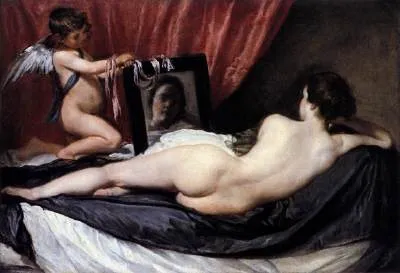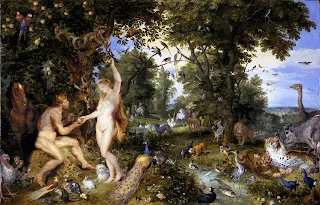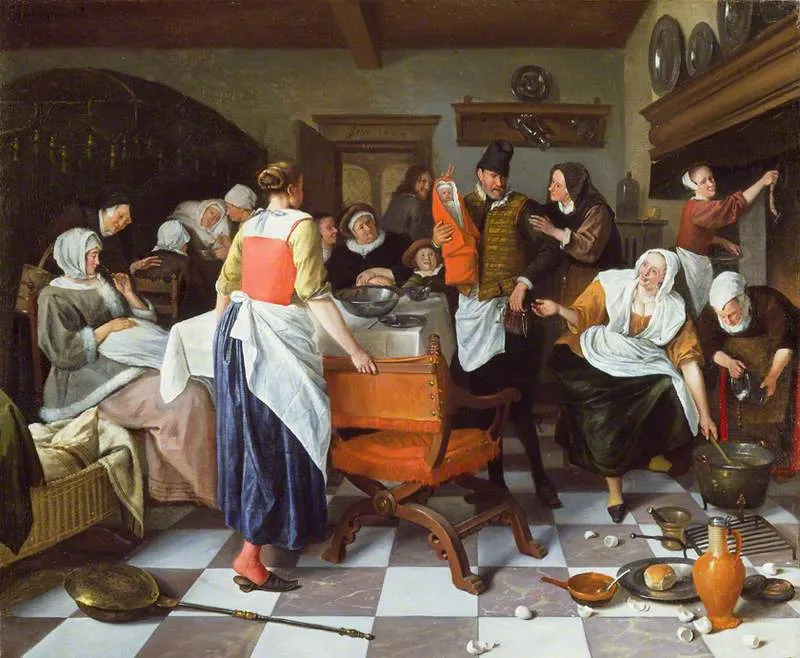Witchcraft Week 6 Overview
1/17
There's no tags or description
Looks like no tags are added yet.
Name | Mastery | Learn | Test | Matching | Spaced |
|---|
No study sessions yet.
18 Terms

Velazquez’s “Venus at her Mirror” (c. 1649-1661)
modern style but Cupid → not modern woman
looking at the viewer
blurry face → focus on the nude
connection to royalty, mythological → accepted
erotic figure for male viewership
gender flexibility with class (especially for men)

Breughel and Ruben’s “The Garden of Eden” 1615
the Fall, original sin
duality—women inferior, but powerful
Eve sexualised, Adam covered

Jan Steen’s “Celebrating the Birth” 1664
cuckold symbol—legitimacy of child
power of women in household ← scrutinised
focus on men even in female space
Natalie Davis
importance of the history of both men and women
understand the significance of gender groups in the past
Joan Kelly Gadol: did women have a renaissance?
wealthy women as the patrons of troubadours and ballads
Bernard Capp (2003) When Gossips Meet
conduct-book writers (elite and middling readers)
often at odds with common social lives: women leading household, good neighbours vs gadding, familes relied on household income
wife’s money: legal control versus responsibility to manage household budget
wife still has authority over other members of the householf
religious duty vs authority of the husband
young women without husbands at risk (prostitution and crime)
young widows more threat than old
women with absent husbands
abandoned wives → female householders
women with husbands as self-supporting
women out of male supervision, gossiping
birth: female social space
monotonous work → company for tedium
neighbourly ties in times of crisis
solidarity with gossip networks, aggressive towards outsiders
police boundaries of acceptable behaviour
defamation cases: sexual allegations
Mary Risebrook
young widow in London, several employments for good pay
Catherine des Roches
poem about a spindle: “Domestic honor”
Eve
the fall
Martin Luther
women created to serve men, let them bear children to death
Thomas Fuller
witches often women
natural philosophy
women < men (humours)
sperm 1670s, eggs 1827
Blessed Virgin Mary as the perfect woman
free from original sin, virginity
classical goddesses
female protagonists but not good Christian role models
courtly love
idealised
women as an object?
unconsummated
Irish recusants
take advantage of no separate status for wives
Erasmus
spiritual equality
education to make women “fit companions”
topsy turvy
women ruling men